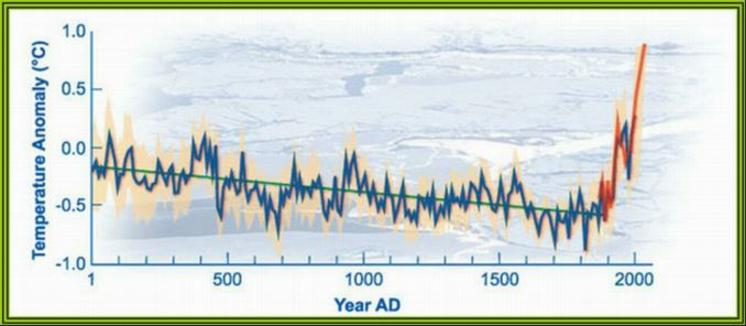From the Calgary Herald:
The unique ice shelves on the north coast of Ellesmere Island, such as the Ward Hunt Ice Shelf shown in this photo, have distinctive white ridges of ice and snow that are cut every few hundred metres with ribbons of turquoise melt water that collects in troughs on the ice’s surface.
Photograph by: John England, HANDOUT PHOTO / University of Alberta
Canada is home to plenty of ice, but the ancient, undulating ice shelves on the north coast of Ellesmere Island are something special.
For starters, the shelves are "beautiful landscapes," says earth scientist John England, at the University of Alberta, who considers the "majestic" shelves in Canada's Arctic a national treasure.
They are also unique in the Northern Hemisphere and home to the oldest sea ice in the northern half of the planet, says England, noting the shelves are 3,000 to 5,500 years old.
And they are disintegrating. A century ago, they covered almost 10,000 square kilometres, an area one and half times the size of Prince Edward Island.
Today the shelves are a tenth that size and could soon be erased completely from Canadian maps and relegated to a footnote in the history books.
"They're really unique, intriguing aspects of our Canadian landscape," says England. "And they are disappearing."
When polar explorer Robert Peary described - and cursed - the shelves in 1907, they extended like a giant icy apron for almost 600 kilometres along the north coast of Ellesmere Island.
Peary wrote how melt water furrows that formed between the icy ridges on the shelves constituted a "watery hell" and major impediment to dog sleds. But once his expedition made it across the "long prairie-like swells" Peary marvelled in his journals at the size and uniqueness of shelves.
Today only four small shelf remnants are left - covering less than 900 square kilometres. And the largest of the remaining ice shelves is cracking.
The eastern side of the Ward Hunt ice shelf has fractured in the August heat, liberating close to 50 square kilometres of ancient ice, the Canadian Ice Service, a department of Environment Canada, reported Aug. 25.
The fractured ice is still hugging the north coast of Ellesmere, hemmed in by the pack ice. But scientists expect it is just a matter of time before it sails away.
"It's looking really precarious," says England.
Trudy Wohlleben, a senior ice forecaster at the Canadian Ice Service, says: "The worst case scenario from the cracks that we can see is that we would lose the entire eastern part of the ice shelf.
"The pieces are not only fracturing off the seaward edge of the shelf, they're also fracturing off the back edge of the shelf, which lets out into a fiord behind it," she said.
England says ice from the shelves creates remarkable ice islands.
"They're like the Titanic in a bunch of wood chips," he says, noting how the islands stand out amid the much thinner sea ice. Ice from the shelves is close to 40 metres thick and has distinctive ridges and troughs.
Scientists say the demise of the shelves is accelerating, but they have been shrinking for decades. "It's been a progressive demise," says England.
In the 1940s and '60s, huge ice islands snapped off the Ellesmere's shelves - some hundreds of square kilometres in size. And an ice island that calved off in the early 1980s, dubbed "Hobson's Choice" was used as a floating research platform by scientists as it sailed around the Arctic.
Two smaller shelves have been lost in recent years - the Ayles in 2005 and the Markham in 2008. And the fracturing of the Ward Hunt this summer indicates it is time to revise the maps again, says England, who stresses the change unfolding in the north is "remarkable."
England and his colleagues say loss of Ward Hunt ice shelf would be "without precedent in the last 5,500 years."
They dated driftwood on Ellesmere that come ashore before the western half of the Ward Hunt ice shelf formed, and found it's been there 5,500 years. Another team has pegged the age of other parts of the shelves at 3,000 years.
All of which makes the shelves as old, if not older - and in England's mind, as much as a treasure - as the Egyptian pyramids.
"They're old friends," England says of the shelves.
And the demise of the shelves is yet more evidence that the Arctic and planet is warming. "And it behooves us to listen," he says.
Welcome to By 2100!
This Blog is designed to be a Diary of Events illustrating Global Climate Change, and where it will lead.
Commentary is encouraged, but this Blog is not intended for discussion on the Validity of Climate Change.
Category Labels
- Climate Events (85)
- Climate Solutions (45)
- Videos (42)
- Climate Statistics (39)
- The Deniers (34)
- Humour (15)
- Basic Information (5)
Saturday, August 28, 2010
Subscribe to:
Post Comments (Atom)
www.know-the-number.com
Our Climate is Changing!Please download Flash Player.

No comments:
Post a Comment